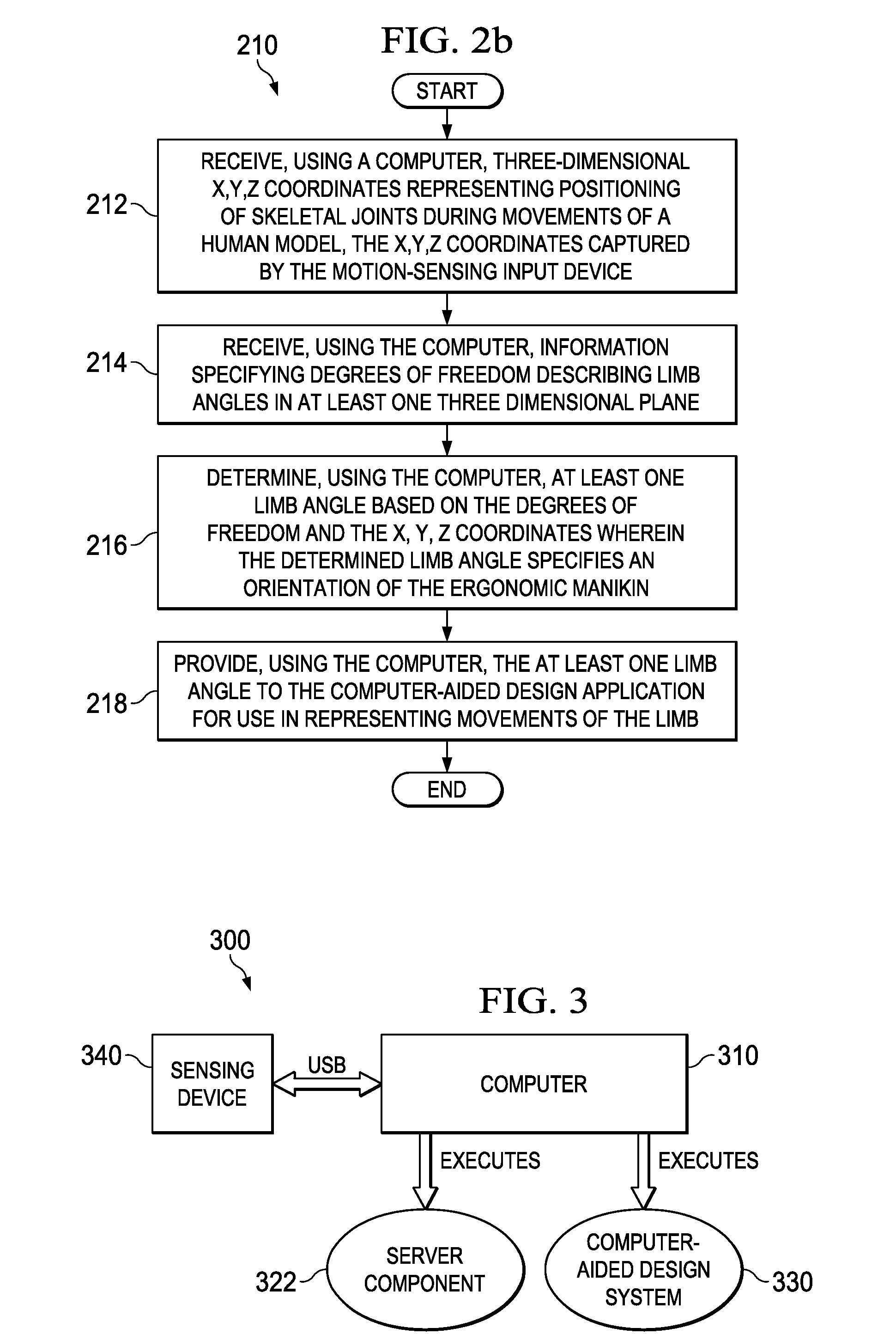Creating Ergonomic Manikin Postures and Controlling Computer-Aided Design Environments Using Natural User Interfaces
a technology of ergonomic manikins and computer-aided design, applied in the field of ergonomic manikins and controlling their environments, can solve the problems of time-consuming and labor-intensive manual positioning of ergonomic manikins with functionality built into existing computer-aided design and computer-aided manufacturing tools, and the inability to accurately and accurately set digital human postures inside computer-aided systems, etc., and achieve the effect of reducing the time and cost of manually positioning a human model or outsourcing the task to external
- Summary
- Abstract
- Description
- Claims
- Application Information
AI Technical Summary
Benefits of technology
Problems solved by technology
Method used
Image
Examples
Embodiment Construction
[0048]The illustrative embodiments recognize and take into account the issues described above with respect to providing economical tracking capability for posing ergonomic manikins. Such capability may enable a better situational awareness of design and manufacturing process decisions when applicable throughout a product lifecycle. The illustrative embodiments may allow a user to perform work as adequate gesture and voice control is provided to enable control of a computer-aided design environment without using mouse, keyboard, or other manual input devices.
[0049]The illustrative embodiments also provide for marker-less motion tracking and capture capabilities that may use low cost motion-sensing input equipment in conjunction with computer-aided design systems. These tracking and capture capabilities may enable relatively low cost full body tracking and control of ergonomic manikins as well as other three-dimensional geometry and application functions.
[0050]External input devices s...
PUM
 Login to View More
Login to View More Abstract
Description
Claims
Application Information
 Login to View More
Login to View More - R&D
- Intellectual Property
- Life Sciences
- Materials
- Tech Scout
- Unparalleled Data Quality
- Higher Quality Content
- 60% Fewer Hallucinations
Browse by: Latest US Patents, China's latest patents, Technical Efficacy Thesaurus, Application Domain, Technology Topic, Popular Technical Reports.
© 2025 PatSnap. All rights reserved.Legal|Privacy policy|Modern Slavery Act Transparency Statement|Sitemap|About US| Contact US: help@patsnap.com



